
views
Tying a Balloon Filled with Air
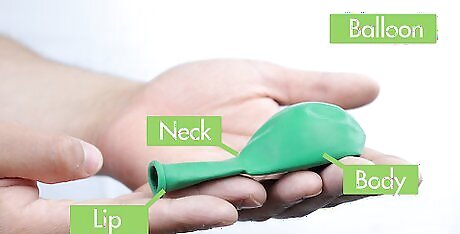
Understand the anatomy of a balloon. In order to make sense of these instructions, we should know how to refer to each area of the balloon that we’ll be dealing with. Memorizing these terms—or just consulting this list if you become confused—will help immensely in the task ahead of us. The body is what we might consider the main area of the balloon; it’s the spherical or oval-like chamber that we fill with air. The lip is that ring of thicker material that surrounds the balloon’s opening and is where air enters and exits the balloon. The neck is that slightly elongated area leading from the body to the lip.
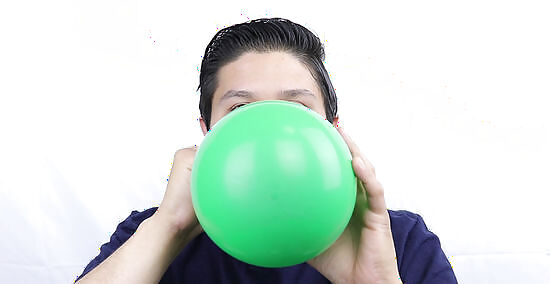
Blow up the balloon. Whether you’re using an air compressor, pump, or just your own good, old-fashioned lungs, start blowing into the balloon through its lip. If you’re having trouble keeping the balloon steady while you inflate it, delicately grip it by the neck. The balloon should feel full, but not as though it has been filled to its utmost capacity. Stop inflating once it can hold its form with little give. A balloon that’s filled too full can easily pop, and will be difficult to tie off. Ensure that the balloon still has a discernible neck. If you can’t tell where the body ends and the neck begins, your balloon is likely too full.
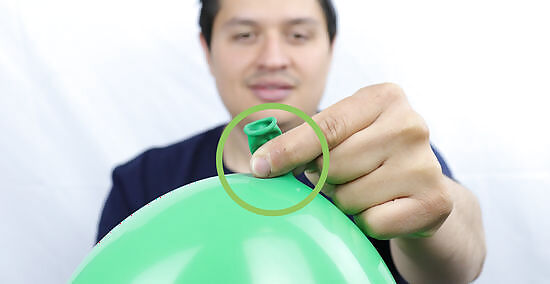
Pinch the balloon’s neck. We need to keep the balloon inflated, so one hand should always be holding the balloon for this purpose. Pinch the neck of the balloon once it’s been sufficiently inflated.
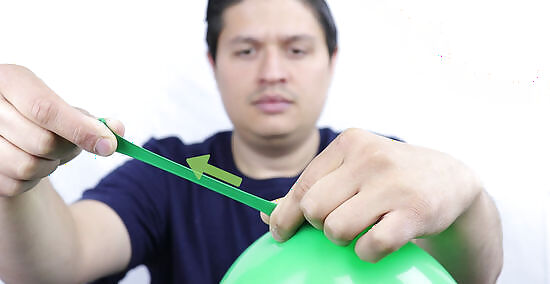
Stretch its neck out. You’ll need the balloon’s neck good and loose for the next step, so you’ll want to gently, rapidly tug on the neck a few times with the hand you’re not using to pinch the balloon shut. Three or four times should be sufficient. Shoot for 3-6 inches of give when you stretch out the neck. You'll need it stretchy enough so that it can wrap around two fingers. Any less and you’ll likely have a hard time trying to tie this balloon off; any more and your balloon might not be fully inflated.
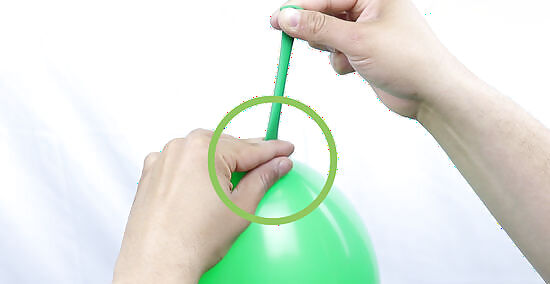
Pinch the balloon’s neck between the index and middle fingers on one hand. The neck should be held as close to the body as you can manage, with the lip pointed toward you.
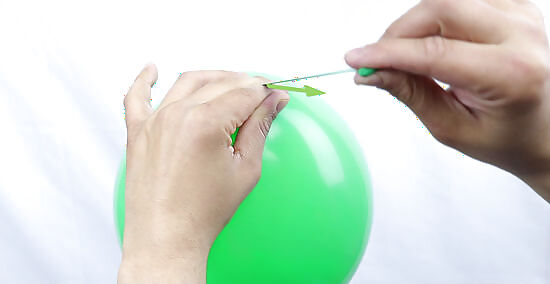
Pull the lip toward you with your non-pinching hand. At this point, you should place the thumb of your pinching hand against the pinching hand's index finger.
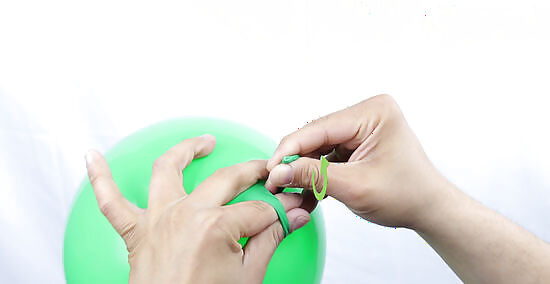
Loop the stretched length of neck over the top of your pinching hand's thumb and index finger. Bring the lip all the way around and underneath your pinching fingers, without wrapping up your middle finger. If you’re unable to pull the neck far enough, this could be an indicator that your balloon is too full, or that your neck wasn’t properly stretched. Loosen your grip on the balloon to slowly, slightly deflate it.
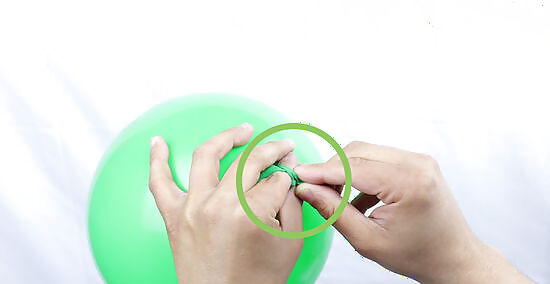
Transfer the lip from the looping hand to your wrapped-up finger and thumb. Your pinching hand's thumb and index finger should now have the material stretched taut across them, but your middle finger should be excluded from the loop.
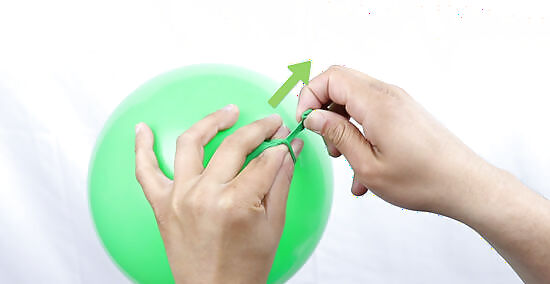
Pull the lip backwards through the loop you've created. Retract your thumb and finger—now grasping the balloon’s lip—back through the loop which you’ve wrapped around them. Think of it like tying a knot in a piece of string or a shoelace. You should be pulling your thumb and index finger inward, toward the hand that they belong to.
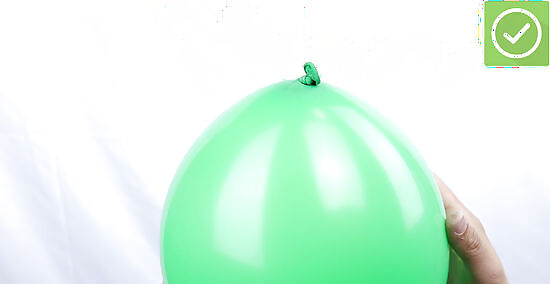
Allow the loop to slide forward off your fingers. If you kept hold of the lip, you should have created a knot. This balloon is ready to party!
Tying a Water Balloon
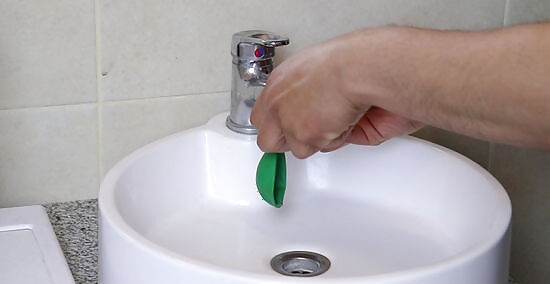
Stretch the opening of the balloon's lip around the faucet. Hold the lip in place around your water source, to ensure that it doesn’t slip off as the balloon begins to take on water weight. If you have any trouble with slippage, use your other hand to support the expanding balloon from below. The "lip" of the balloon is that thick ring of material that surrounds the balloon's opening, through which water and air can flow. You should make sure the area around you can handle an accidental water balloon explosion, as even seasoned pros will have their fair share of these. Make sure there are no electronics or non-waterproof valuables nearby.
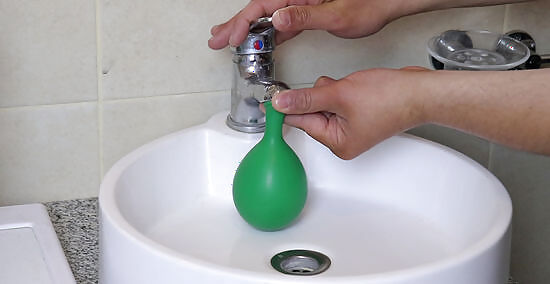
Fill the balloon with water. Ensure you’ve firmly secured the balloon before turning on that faucet, hose, or spout. Experience will help you determine the speed at which to fill the balloon but opt for a slower pace at first, increasing water flow only as you gain practice with the procedure. Water balloons are typically smaller than balloons designed to be filled with air or gas mixtures, so keep this in mind if you’re used to dealing with air-based balloons. If you overfill the balloon, it will let you know by politely exploding on you. If your balloon does indeed burst, take note of the point at which this happens to ensure you don’t fill your next balloon to that point. If you are going to fill lots of water, support the balloon from the bottom. Otherwise, the weight of the water will stretch the neck so much, that it will tear apart.
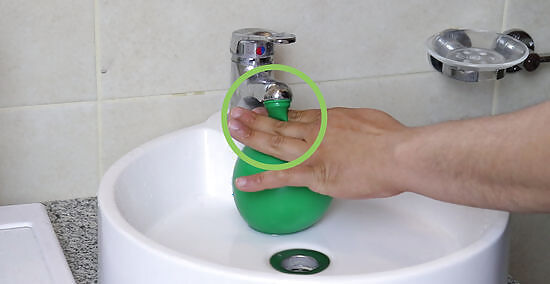
Remove the water balloon from the faucet, with its neck between the index and middle fingers of one hand. The lip should be pointing up, and the weight of the full balloon should stretch its neck. If the sagging balloon doesn't appear to have enough neck—you'll likely require 2-6 inches—you've likely overfilled your balloon. The "neck" of the balloon is that slightly elongated section of the balloon where the main body of the balloon meets the lip.
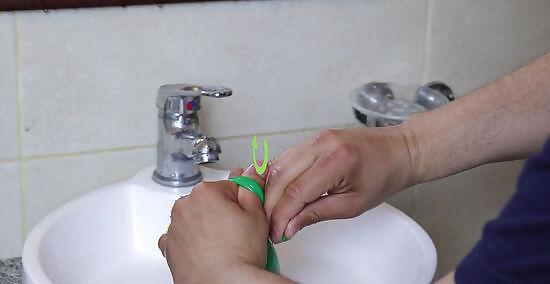
Grab the lip with your free hand and loop the balloon’s neck over the top of your pinching hand's thumb and index finger. The lip should come all the way around and underneath your pinching fingers. Exclude your middle finger from this loop.
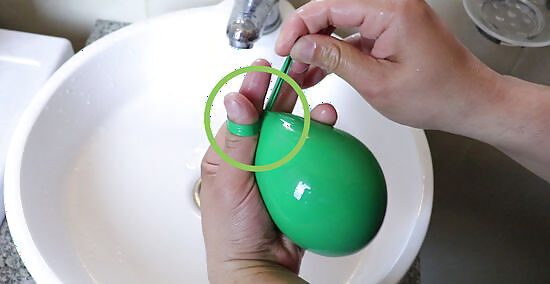
Pass the lip from your looping hand to your wrapped-up finger and thumb. Grasp the lip with that finger and thumb.
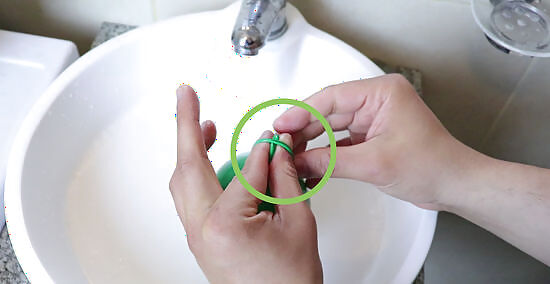
Retract the lip, along with your finger and thumb, backward through the loop that's wrapped up around them. You should be pulling your thumb and index finger inward, toward the hand that they belong to.
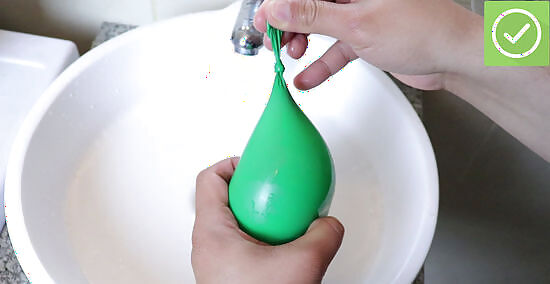
Allow the loop to slide forward, off your fingers. The water's weight should tighten the knot for you, completing the process. Your water balloon should now be ready to use!




















Comments
0 comment